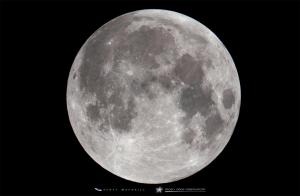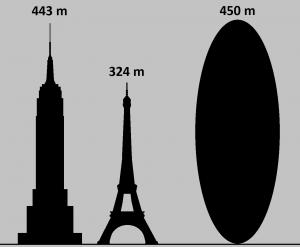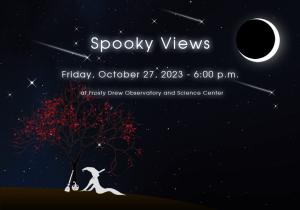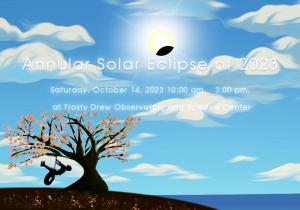Celebration of Space - September 29, 2023

The asteroid sample return mission, OSIRIS-REx, successfully landed in the Utah desert on Sunday, September 24, 2023. Credit: NASA/Keegan Barber
Early this morning, Friday, September 29, 2023, at 5:58 am ET, the Moon arrived at the point in its orbit where it is on the opposite side of Earth than the Sun. This is the full Moon, which is scientifically referred to as Opposition. During the full Moon, the side of the Moon that is facing Earth will be in direct, full sunlight, with the other side of the Moon experiencing full darkness. Additionally, on the day of the full Moon, the Moon will rise with the setting Sun, and set with the rising Sun, placing the Moon above the horizon for the entire nighttime period.
Like all full lunar phases, there is a common name that is associated with the month that the Moon occurs in. The September full Moon carries the moniker: The Full Corn Moon. The name has Native American origins, but you don’t need to look much past the cornfields of most rural areas of the US to draw a connection with the name. Although the September Moon is called the Full Corn Moon, in 2023 it carries an additional name: The Harvest Moon.
The Harvest Moon, which is commonly mistaken for the name of the September Moon, is the closest full lunar phase to the Autumnal Equinox. The equinox occurred on Saturday, September 23rd, which places today’s Moon as the closest to the equinox, which makes it the 2023 Harvest Moon. Now the Harvest Moon usually occurs in September, but it is not all that uncommon to have it occur in October. As for the notion that the Harvest Moon is the biggest and brightest full Moon of the year, that is just nonsense. You may ask: isn’t the Harvest Moon so bright that farmers can harvest crops under its intense light? The answer is yes, but not because the Harvest Moon is so bright, but because this is the time of year that harvest occurs. Regarding the brightness of the Moon, one could harvest crops under any full Moon, but crops are not being harvested in February, etc. If the month didn’t matter, we could argue that the full Moon of December would probably be the best to harvest under because it will be the full Moon that is highest in the sky, due to the Winter Solstice.
We have heard that today’s full Moon is also a supermoon, which is when the full lunar phase occurs at the same time as the monthly lunar perigee. The perigee is when the Moon is at its closest point to Earth over one orbital period. The Moon’s orbit has a bit of eccentricity to it, which is a deviation from a perfect circle. Due to this, the Moon has a close point and a far point in its orbital path. But the lunar perigee occurred Wednesday, September 27th at 9:06 pm, which is quite a time away from the occurrence of the full phase. So we would not consider this a supermoon, but we are sure you will hear CNN and FOX News calling it that. Regardless of what you call today’s Moon, it is a big deal as it is another indicator that fall has arrived in the Northern Hemisphere. If you have a clear sky tonight, step out with a glass of hot cider and observe the Harvest Moon, and welcome autumn.
On Sunday, September 24, 2023, the OSIRIS-REx mission successfully returned a sample of the large asteroid 101955 Bennu to the Utah desert. Once the sample landed, the capsule carrying 250 grams of rocks and debris from the asteroid was transported to a local clean room and flooded with nitrogen gas, which will keep the samples from being contaminated by Earth-based stuff. On Monday, September 25, 2023, the samples were flown to NASA’s Johnson Space Center, for closer inspection. Even though the main asteroid sample container has not been opened yet, it was reported that the capsule carrying the container showed a significant amount of sand-sized matter and dark powder inside the lid and base. NASA has scheduled an unveiling of the Bennu sample on October 11, 2023 at 11:00 am ET. We will include a notification in that week’s newsletter with a link to watch.
Regarding the OSIRIS-REx spacecraft, which is still fully operational, the mission has been extended, and the name of the extended mission is OSIRIS-APEX, this changes Regolith Explorer (REx) to Apophis Explorer (APEX). 99942 Apophis is another large Near Earth Asteroid (NEA) that is considered potentially hazardous. On April 13, 2029, Apophis will make an extremely close approach to Earth, at a distance of 19, 600 miles, which is over ten times closer than the Moon. It will be the closest approach of an asteroid of this size in recorded history. On April 21, 2029, OSIRIS-APEX will rendezvous with Apophis and perform the same type of analysis that OSIRIX-REx did with Bennu, that is without a sample collection, of course. So give it up for a fabulously successful mission that will increase our knowledge of the early days of the Solar System, and how to deflect large asteroids that have the potential to impact Earth. Check out photos from NASA of the OSIRIS-REx sample return.
Now that autumn has officially arrived, the Harvest Moon is here, and we are about to close out September, it is a good time to start talking about the spookier season of the year, as we enter October and begin our approach to Halloween. New England is a fabulous place to be for the fall season, and a lot of American ghost stories and lore originate from the New England area, making Halloween a significant date in the region. At Frosty Drew Observatory and Science Center, we join in the festivities with our Spooky Views – A Halloween Stargazing Experience, which will take place on Friday, October 27, 2023. Our Halloween event will bring a night of freak outs and spooks to our campus. We’ll be showing views of Jupiter, Saturn, and the 98% waxing gibbous Moon in our telescopes. The Observatory, Courtyard, and Science Center will be in full out spooky mode with creepy décor and sounds. We’ll host a creepy, family friendly, story time Under the Willow by the light of the Moon, and a kid friendly scavenger hunt designed to take visitors around our campus. The Sky Theatre will be in full out alien invasion mode as we will host two airings of the original War of the Worlds radio broadcast that was put on by Orson Wells in 1938. Of course, loads of candy will be available for visitors. Registration for the event opens on Sunday, October 1, 2023. Additional info and tickets (once registration opens) can be had on our event page. So put the event on your calendar and get ready for a creepy night of astronomy at Frosty Drew.
The countdown is on for the October 14, 2023 annular solar eclipse over the United States. At Frosty Drew Observatory and Science Center, the eclipse will be visible as a 19% partial solar eclipse that will occur midday. Being that October 14th is a Saturday, this may be an amazing day to be out to see the eclipse. 2023 weather has been catastrophic in regards to astronomy and we are uncertain how the 14th will play out. If the weather is good, the Frosty Drew campus will be buzzing with solar activities. We will have several solar telescopes set up, both in white light and hydrogen alpha. A live stream will be available on screens in the Observatory, Science Center, and around the campus of the eclipse from a telescope fitted with a camera. Additionally, we will have several observing stations available with solar projectors, eclipse glasses, and camera obscures set up for observation. Tickets are required to attend the event, and ticket sales opened on September 14, 2023. Each ticket will come with a pair of Eclipse Glasses that ticket holders can keep. Check out the Annular Solar Eclipse event to learn more about the day and to get tickets.
Evening passes of the International Space Station (ISS) and China’s National Space Administration (CNSA) Tiangong station will continue this weekend and coming week, with passes of the ISS wrapping up on Thursday night. Here are several notable passes of both stations for the coming nights:
ISS:
Fri, Sep 29 at 7:31 pm, starting in the NW, rising to 30°, heading towards the ENE, and into orbital sunset
Sat, Sep 30 at 8:19 pm, starting in the WNW, rising to 63°, and into orbital sunset ← Awesome pass!
Sun, Oct 1 at 7:30 pm, starting in the NW, rising to 68°, heading towards the ESE, and into orbital sunset ← Awesome pass!
Mon, Oct 2 at 8:19, starting in the WNW, rising to 24°, heading towards the SSW, and into orbital sunset
Tue, Oct 3 at 7:30 pm, starting in the WNW, rising to 42°, heading towards the SSE, and into orbital sunset
Thu, Oct 5 at 7:31 om, starting in the W, rising to 15°, heading towards the SSW
Tiangong:
Fri, Sep 29 at 7:35 pm, starting in the SW, rising to 29°, heading towards the SE, and into orbital sunset
Sat, Sep 30 at 8:10 pm, starting in the WSW, rising to 54°, and into orbital sunset
Sun, Oct 1 at 7:08 pm, starting in the SW, rising to 42°, heading towards the E, and into orbital sunset
Mon, Oct 2 at 7:43 pm, starting in the WSW, rising to 81°, heading towards the E, and into orbital sunset ← Awesome pass!
Tue, Oct 3 at 8:18 pm, starting in the W, rising to 45°, and into orbital sunset
Wed, Oct 4 at 7:16 pm, starting in the W, passing overhead, heading towards the E, and into orbital sunset ← Awesome pass!
Thu, Oct 5 at 7:51 pm, starting in the W, passing overhead, heading towards the E ← Awesome pass!
Even though evening passes of the ISS are ending this coming week for the current cycle, we still have an amazing week of evening station passes occurring. These passes will be very easy to see as long as you have reasonably clear sky conditions over your location. So put these times on your calendar and set your alarms. Step outside with the kids or just yourself and experience a stunning view of two inhabited space based residencies passing over.
- Author:
- Scott MacNeill
- Entry Date:
- Sep 29, 2023
- Published Under:
- Scott MacNeill's Columns






